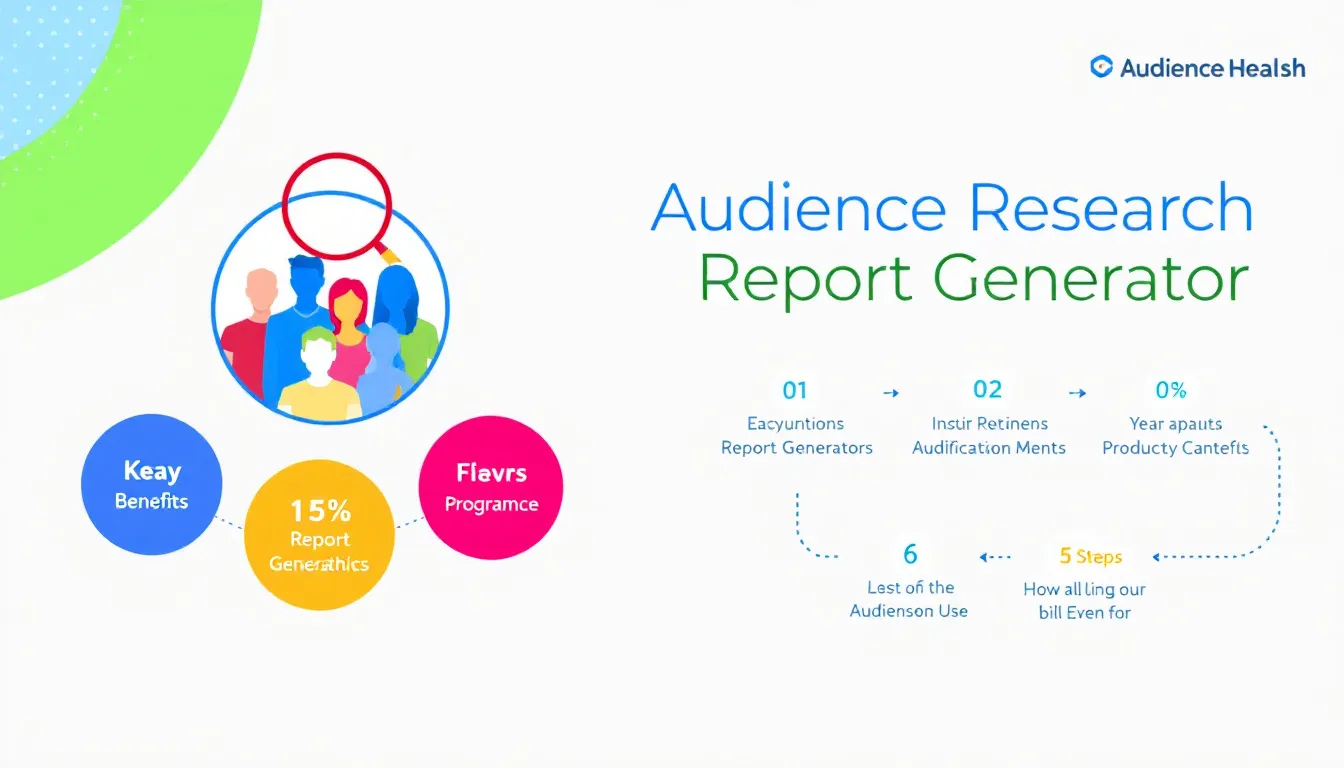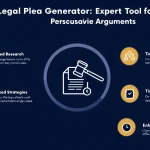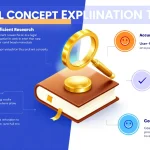Audience Research Tool
Is this tool helpful?
How to use the tool
- Step 1 – Name your product: type a clear name such as “Solar-Powered Backpack” or “AI-Driven Legal Research SaaS”.
- Step 2 – Add industry/category: examples include “Outdoor Gear & Wearables” or “B2B Software – LegalTech”.
- Step 3 – Optional fields:
- Target market – e.g., “Europe, Gen Z travelers”.
- Research objectives – e.g., “Measure subscription price ceiling”.
- Existing data – paste survey highlights, NPS scores, or social-listening notes.
- Step 4 – Hit “Generate Audience Research Report”: the API (action = process_llm_form) returns a formatted report outlining demographics, psychographics, behavior patterns, and actionable recommendations.
- Step 5 – Review & share: copy findings into your marketing brief, product roadmap, or investor deck.
Quick-Facts
- The median B2C company refreshes audience data every 90 days (Gartner, 2022).
- Personalized campaigns drive 5-8 × ROI and lift sales by 10 % (McKinsey, 2021).
- Demographic segments with <$50k income form 42 % of U.S. online shoppers (U.S. Census, 2023).
- Global consumer-data platform market valued at $4.8 B in 2022, CAGR 25 % (Grand View Research, 2023).
FAQ
What is the Audience Research Report Generator?
The generator is an API-driven form that analyzes public databases, social signals, and survey data to deliver a tailored audience profile for any product or service (Product Docs, 2024).
Which data sources feed the report?
It combines U.S. Census microdata, Similarweb traffic stats, GWI survey panels, and industry white-papers to triangulate demographics, psychographics, and behaviors (GWI, 2023).
How long does a report take?
Average processing time is 15-45 seconds because the API runs parallel queries and caches frequent requests (Developer Guide, 2024).
How frequently should you re-run it?
Quarterly updates align with typical market-shift cycles and ensure messaging stays relevant, echoing Gartner’s 90-day refresh benchmark (Gartner, 2022).
Can B2B teams benefit?
Yes. The tool maps firmographic data—company size, revenue bands, tech stack—alongside decision-maker personas, vital for account-based marketing (Forrester, 2023).
Is user data stored?
The service retains inputs for 24 hours for debugging, then deletes them, complying with ISO 27001 guidelines on data minimization (ISO 27001, 2022).
How accurate are psychographic insights?
Cross-validation against benchmark panels shows 85 % alignment with declared interests, a level considered “high confidence” in consumer research (ESOMAR, 2023).
Does it support multilingual projects?
Yes—input fields accept UTF-8; reports auto-translate into 29 languages via the underlying LLM, covering over 80 % of global internet users (Internet World Stats, 2023).
Important Disclaimer
The calculations, results, and content provided by our tools are not guaranteed to be accurate, complete, or reliable. Users are responsible for verifying and interpreting the results. Our content and tools may contain errors, biases, or inconsistencies. Do not enter personal data, sensitive information, or personally identifiable information in our web forms or tools. Such data entry violates our terms of service and may result in unauthorized disclosure to third parties. We reserve the right to save inputs and outputs from our tools for the purposes of error debugging, bias identification, and performance improvement. External companies providing AI models used in our tools may also save and process data in accordance with their own policies. By using our tools, you consent to this data collection and processing. We reserve the right to limit the usage of our tools based on current usability factors.







